Features of the cistern for the toilet bowl and its installation
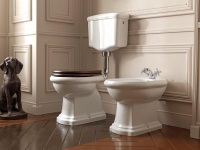
Today we will understand the device of the toilet cistern, consider its features, the nuances of installation and a number of other issues.
Types
Today the cisterns of the drain are presented in an incredibly wide assortment. At the same time they are divided according to various criteria. For example, According to the method of installation they come in:
- Suspended;
- Compact systems (monoblocks);
- Concealed (the vessel is "sewn" into the wall).
Also classified according to the release mechanism:
- Push-button;
- Lever;
- Chain.
Button systems are the most modern and have proven to be the best. The drain button can be located on the side, at the top or even in the middle. Through variations in location, cisterns are mounted behind drywall trim, which allows for a concealed installation.
Chain and lever-operated somewhat obsolete, although they are still found in some models. They are relevant to use if the cistern is suspended. It is easier to reach the chain, rather than stretching to the button.
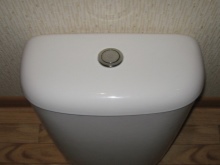

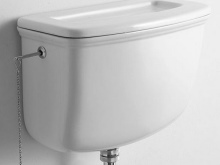
The device
The cistern can be safely considered a technically complex device. It seems to the average user that it is enough to press the button, and the water will flow by itself, and then by some miraculous way inside the tank is again a certain amount of water.
In fact, special devices are responsible for all these processes. They can be divided into three categories:
- The tank, that is, the tank with water;
- Water supply system;
- The system for draining the liquid.
Knowing the device of these mechanisms, to understand the peculiarities of the functioning of the drain tank will not be a problem for you. So you will understand how the water is dialed in, why the supply stops at a certain level and so on.
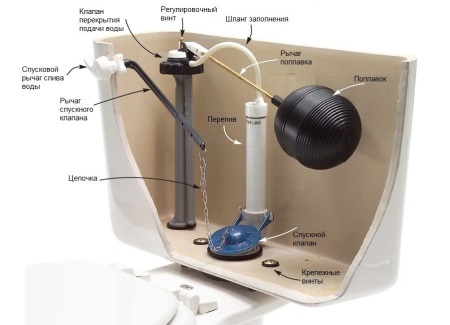
Valve
Today, the mechanism of cisterns involves float valves. Their task is to let water in and out. At the same time, they come in several types:
- Piston;
- Diaphragm valves;
- Croydon.
Croydon
The croydon valve has a shell and has a lever axle, piston and seat on its float. The lever makes the piston move, which moves perpendicularly. As a rule, such devices are very rarely used today and are only installed on older models.
Piston
The piston ones are equipped with a lever axle, which is mounted on a split cotter pin. When the lever is moved horizontally, the piston is activated, periodically touching the seat. This regulates the flow of water inside the tank.
Seals are provided at the end of the piston. When it comes into contact with the seat, the seal shuts off the water. Such valves are used quite widely.
Diaphragm
Diaphragm models use a diaphragm instead of the traditional gasket. It is made of rubber or silicone. When the piston moves, the diaphragm is displaced, so it closes the way for water entering the tank, if necessary. This is a modern, widely used type of valve, which is in the systems of the latest models of toilets.
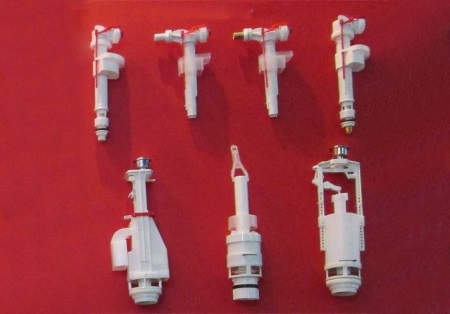
Selection tips
To make the right choice in favor of the right cistern for you, you should take into account several features of those or other designs and solutions.
- Separate. Such tanks are mounted high above the bowl. Externally it creates imbalance in the room, plus the device makes a lot of noise. But the flushing is very effective, such a solution is suitable for the interior in a retro style.
- Compact models. They are put directly on the toilet bowl. While the most popular option, but it is gradually displaced by hidden systems.
- Concealed tank. It is sewn with plasterboard behind the wall, lined with tiles or other finishing materials. Stylishly, neatly, with a minimum of space taken up. Only the flush button remains visible. The only disadvantage is the complexity of preventive maintenance and repair of fittings, which can be reached only through the hole in the flush button.
- Variant of the flush mechanism. On split designs, only side levers and chains are used. For conventional models, you can use buttons, levers, located at the top or side. In concealed models, the button is led out from the front side of the tank. In fact, it is not difficult to make a choice.
- Method of operation. Flush mechanisms can be divided into automatic and mechanical, that is, manual. On the automatic flush, it is enough to once lightly press the button, or pull the lever, so that a certain amount of liquid came out into the bowl. With mechanical ones, you have to press, because as long as you press, the water flows. Two-mode auto-drains are popular today. The button can be single or double. Whether more or less water comes depends on whether the button is pressed or pressed (if there is only one button). Such systems allow for serious water savings.
- Once you have decided on the basic parameters of your choice, take into account shape, color, that is, the aesthetic side of the issue.
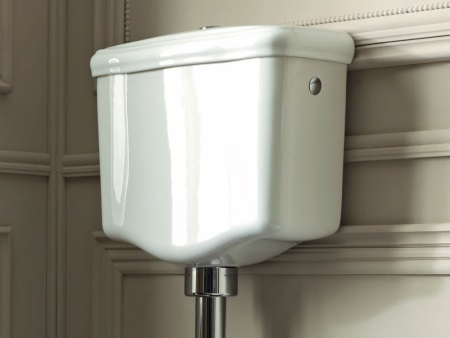
Installation
- To install the new tank, the first task should be to get rid of the old one.
- Turn off the water supply, drain all the contents of the tank into the bowl.
- Disconnect the old tank from the coupling, remove all fasteners.
- Clean surfaces, replace gaskets in connecting assemblies.
- Place the tank in its new location, mark it if necessary.
- Connect it to the drainage pipe, make all connecting measures.
- As practice shows, most people install a similar cistern when it fails, when the replacement of the toilet bowl itself is not provided.
- If you are thinking about replacing the normal tank on the hidden, we recommend changing the toilet bowl at once. The fact is that they are created depending on the type of tank used.
- Making sure that all connections are made, gaskets and seals are in place, turn on the water supply and check the effectiveness of the new tank.
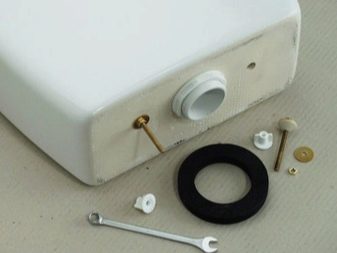
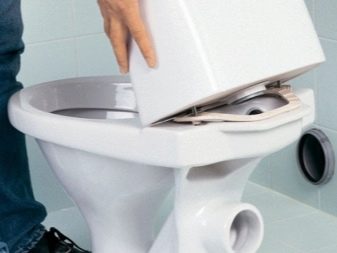
Repair
There are various kinds of problems and malfunctions, which are typical for those or other types of tanks. Therefore, will consider the issue of repair based on this.
Push-button mechanisms
It is likely that in such devices the tank leaks, there is a continuous flow of water. This can happen for a reason:
- The lever has shifted or skewed. Return it to its original position, position it a couple of centimeters lower than the underneath;
- The stop gasket is no longer working. In this case, you will have to remove the cover, fix the float so that it is in the upper position, unscrew the nut, remove the fitting and replace the bad gasket in it with a good one.
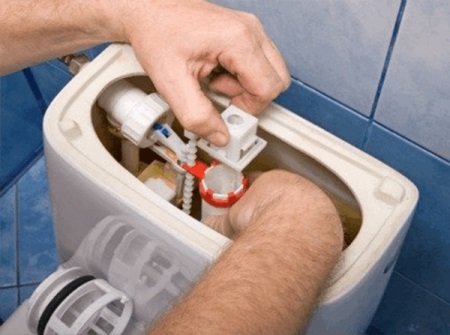
Bottom supply.
With these types of tanks, the most popular faults are as follows:
- Weak head of the fluid system. The diaphragm valve may not respond to it, causing the tank to leak. The pressure required for such a valve to function is 0.05 MPa. Sometimes the best solution is to replace it with a rod counterpart;
- Improperly executed installation. Before assembling the tank, it is important to visually inspect it. Valves in no case should not touch the inner walls. Just adjust the position of the mechanisms, do everything according to the instructions.
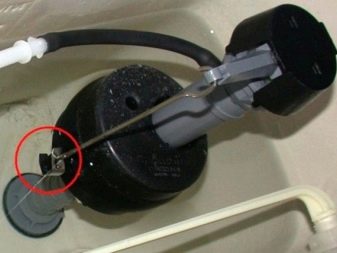
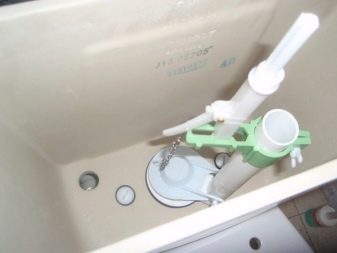
Side inlet
Side inlet tanks are very often used today in the toilets of apartments, houses and elsewhere. If the cause of the breakdown is a defect in the stop valve, nothing can be done, it will have to be replaced. But some other problems you can fix yourself:
- Insufficient pressure. It is quite possible that the inlet filter is clogged. Dismantle it, rinse it thoroughly and put it back in its rightful place;
- The rod is not correctly installed or adjusted. Check its location, correct it if mistakes were made in the installation steps.
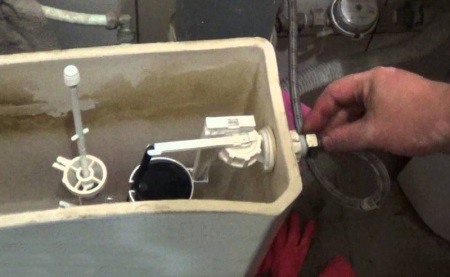
Concealed devices.
Wall-mounted tanks have limited access to their system. Therefore, you will have to try hard to solve the problem.
There are two ways to fix the problem:
- The tightness of the hoses is broken. Fix the situation will help hatches, which should be provided even at the stage of repair inside the room. Plus, these hatches will help if the tank starts leaking;
- The fittings are damaged. It cannot be repaired because of the design. Dismantle and install a new one.

As you can see, it is quite possible to fix many problems without the help of specialists. However, it is better not to face such situations at all.
For this Experts recommend buying high quality sanitary ware, competently choose the tanks, studying the whole wide range of the market. Trusting such products, they will answer you a long and trouble-free work. You'll save a lot of money on preventive maintenance, repairs, replacement parts, and will not be a couple of years thinking about a complete replacement of plumbing in your toilet.
But still understand the repair will never be superfluous. Even the highest quality products can fail. And most often - through the fault of the user himself.





